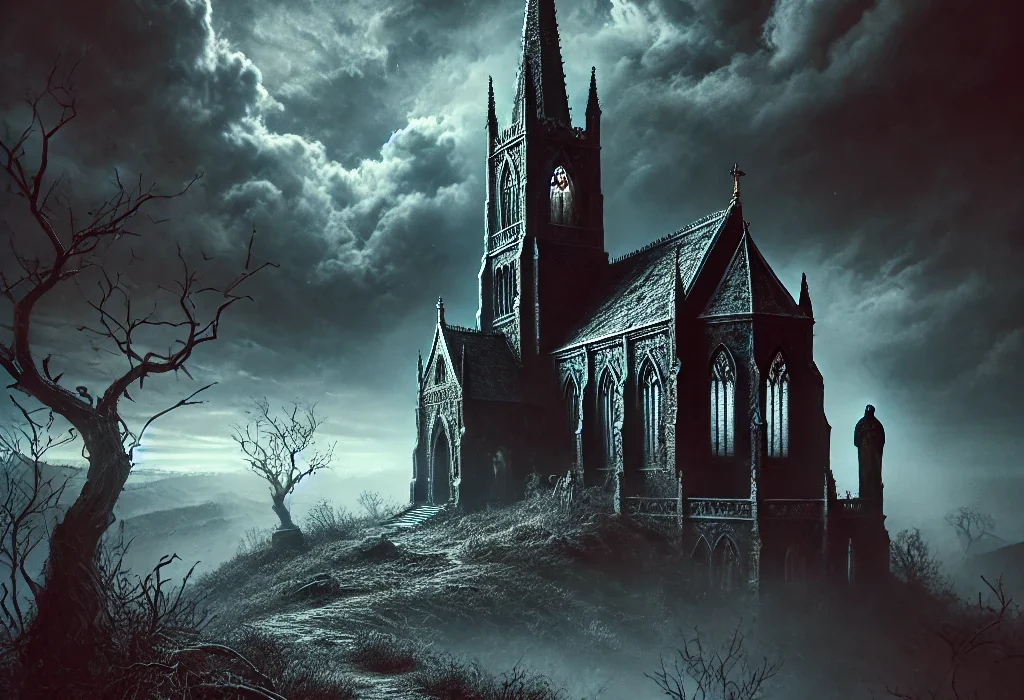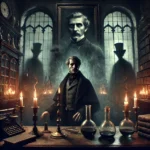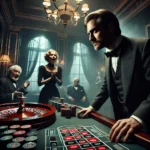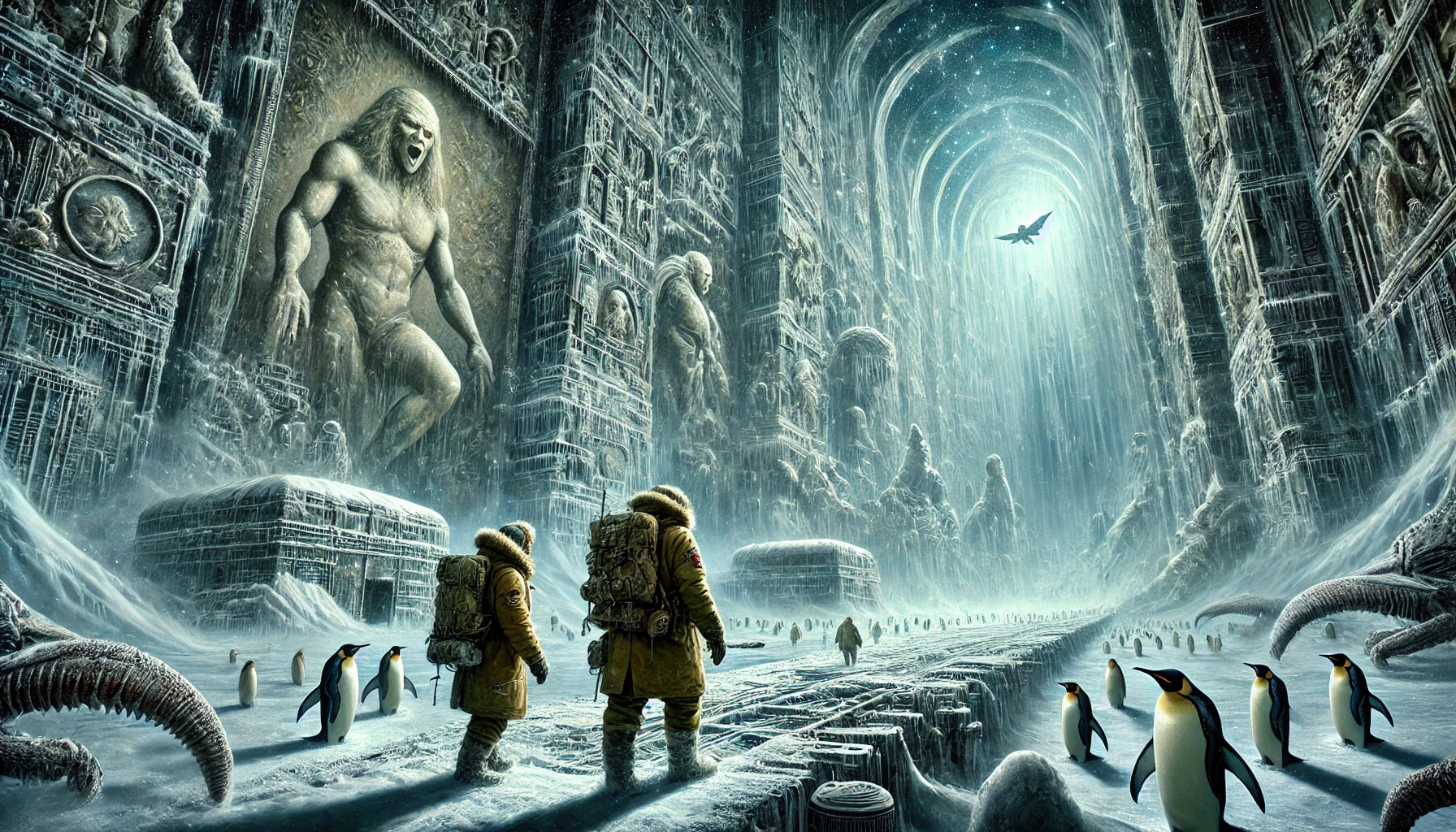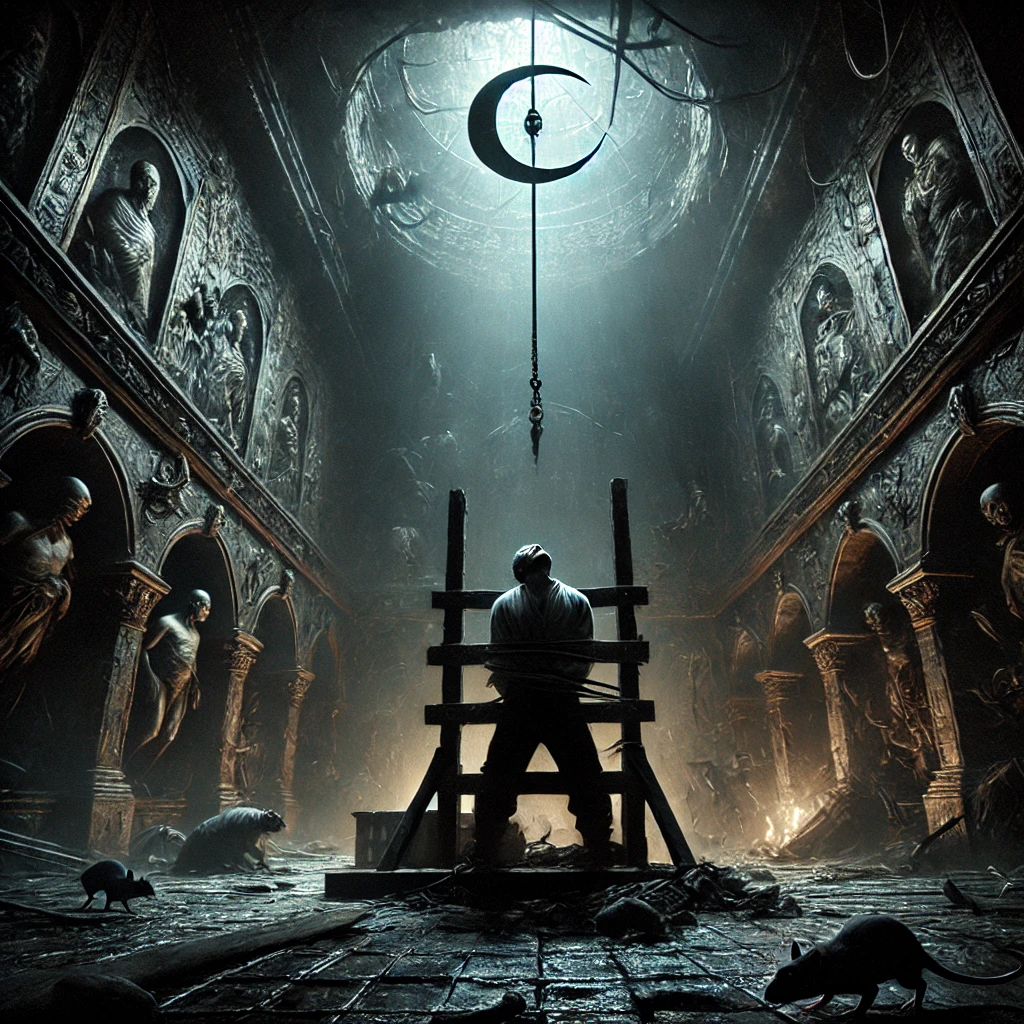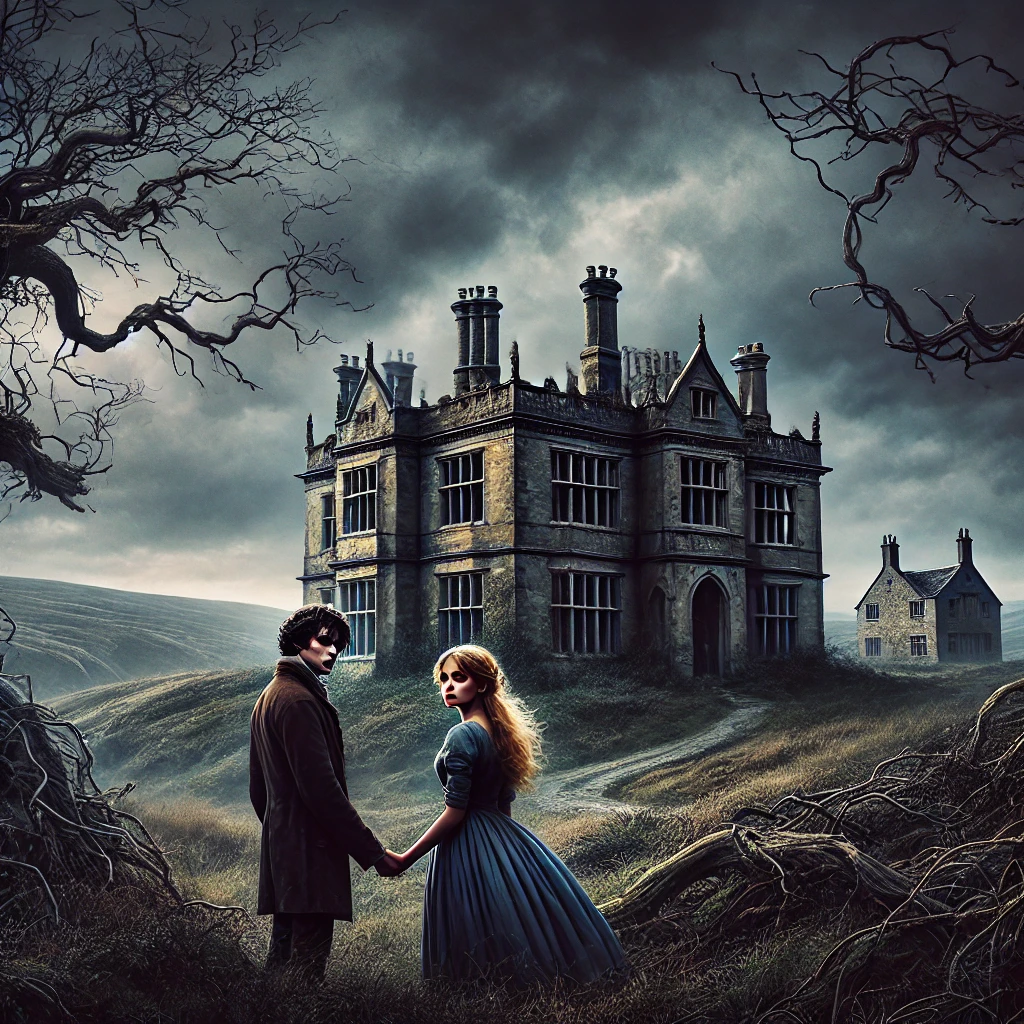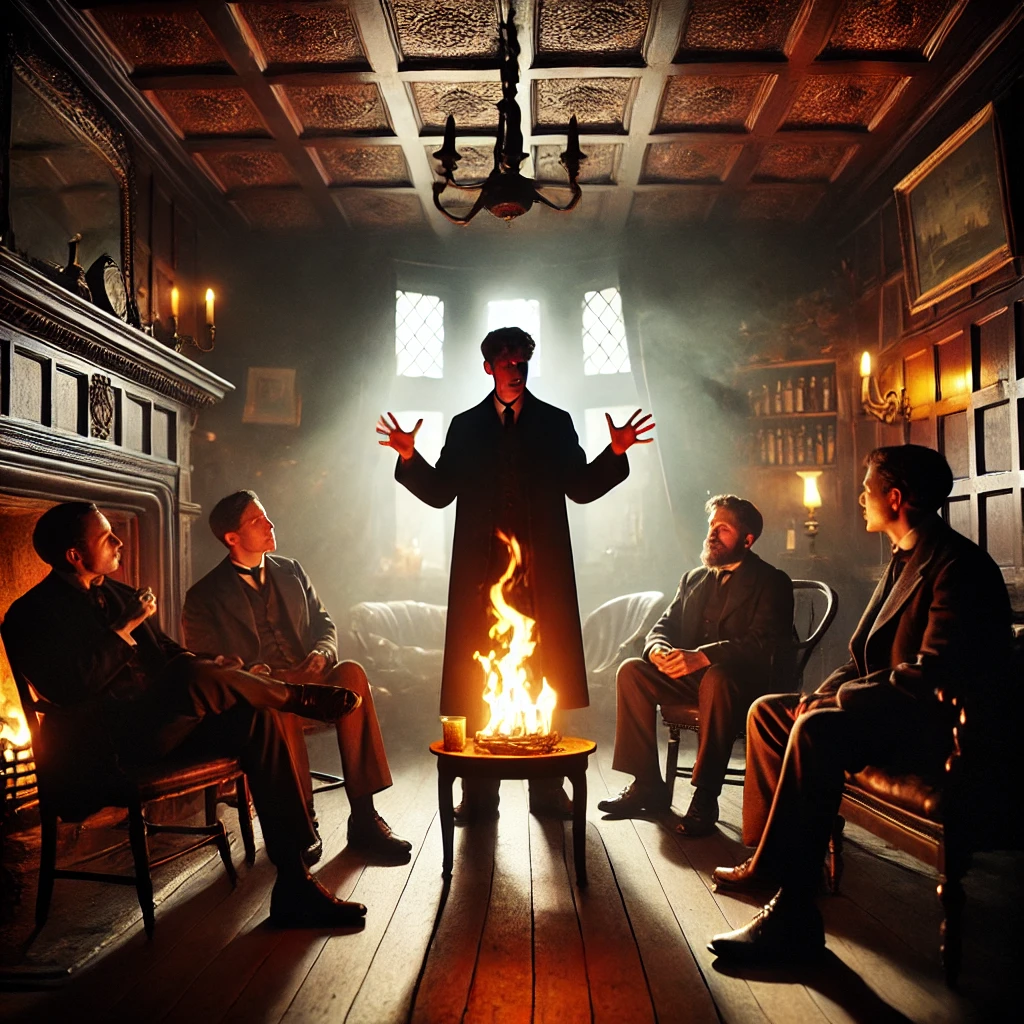“The Haunter of the Dark,” written by H.P. Lovecraft in 1936, is a tale of cosmic horror set in the city of Providence, Rhode Island. It revolves around Robert Blake, a writer and painter drawn to the eerie and the occult. The story delves into themes of forbidden knowledge, the unknown, and the insignificance of humanity in the face of cosmic entities.
Plot Summary
Robert Blake, a writer and painter with an unquenchable curiosity for the macabre, moved into a quaint old house in Providence, Rhode Island. From his study on the top floor, he gazed across the cityscape, his eyes frequently drawn to a distant, ominous structure on Federal Hill. The building was a blackened church, its tall, grim spire clawing at the sky like a dark sentinel. The church stood in stark contrast to the more familiar sights of the city, an alien presence that beckoned to Blake’s imagination with a sinister allure.
For months, Blake watched the church from his window. He sensed an aura of desolation around it, a feeling of something ancient and malevolent that had long since been abandoned by the living but not by whatever shadows lingered within its stone walls. The pigeons and swallows that populated the city’s other spires avoided this one, and Blake could not shake the impression that something was wrong, fundamentally wrong, with that place. It was as if the church itself was a gate to another world, a world of dark dreams and unspeakable horrors.
The church was reputedly the former meeting place of the Starry Wisdom cult, a sect known for its dark rites and forbidden knowledge. Legends whispered of sacrifices and rituals meant to summon beings from the outer void. The cult was said to have been active in the 19th century before it vanished, leaving behind only the tales of horror and the abandoned church. Blake’s fascination grew as he learned of these stories, though he brushed them aside as mere superstition.
But there came a day when Blake could no longer resist the lure of the darkened spire. In late April, just before the shadowy time of Walpurgisnacht, he set out on a journey across the city to Federal Hill. The streets twisted and turned as if trying to disorient him, the houses growing older and more decrepit as he neared his destination. The air seemed heavier there, the sky darker. Blake finally arrived at the church, standing at the edge of an open square, its towering bulk rising before him like the last bastion of some long-dead age.
It took all of his will to climb the steps to the church. The place was surrounded by an iron fence, and the path leading up to it was choked with weeds and long-forgotten gravestones. The great doors were locked, and Blake circled the church, seeking another way in. He found it in the form of a broken cellar window and crawled through into the dust-choked darkness within.
Inside, Blake discovered a vast cellar filled with debris and cobwebs, the remnants of whatever life had once filled this place. He found a staircase leading upward and began his ascent, his heart pounding with a mixture of fear and exhilaration. He emerged into the nave of the church, a colossal space filled with the eerie stillness of long abandonment. The air was thick with dust and the oppressive silence of the crypt.
Blake’s eyes were drawn to the stained glass windows, obscured by centuries of grime, their images unclear but sinister in their half-seen forms. At the altar, he found a cross, but not a Christian cross; it was an ankh, an Egyptian symbol of life that seemed out of place in this Gothic edifice. Behind the altar lay a vestry, and here Blake made a chilling discovery: a collection of books, rotting with age but unmistakably sinister in their titles. They were tomes of ancient and forbidden lore, volumes that hinted at the cult’s blasphemous practices and its knowledge of things that should not be known.
Blake’s curiosity drove him further, up a staircase to the church’s tower. Here, in the dim light filtering through the broken louvres, he found the object that had been the focus of the cult’s dark worship: the Shining Trapezohedron. It was a stone, not of any shape known to man, and it seemed to glow with an inner light that pulsed like the heartbeat of a living thing. It was housed in a metal box, which bore strange, almost hieroglyphic markings. Around it were arranged seven chairs, and behind them, statues of strange, inhuman figures that loomed like silent guardians.
As Blake gazed into the Shining Trapezohedron, he was overcome by a flood of visions. He saw alien worlds with cyclopean structures, towering above desolate landscapes, and otherworldly beings whose forms defied understanding. He felt himself being pulled into the stone, as if it were a window through which he could glimpse the very fabric of the cosmos. It was then that he sensed something else, something beyond the stone, staring back at him. A consciousness, vast and malevolent, lurking in the dark void beyond the stars.
He staggered back, his mind reeling. He knew then that he had awakened something that should have been left undisturbed. The Haunter of the Dark, the being the cult had worshipped, was real, and it was imprisoned in this place, held at bay only by the light. The stone was its connection to this world, and by looking into it, Blake had summoned the creature from its slumber.
In the days that followed, Blake was a changed man. He could feel the Haunter’s presence, a constant pressure at the back of his mind. He became obsessed with the church, watching it from his window and fearing the coming of night. The Haunter could only move in darkness, and he dreaded the thought of a power outage or a thunderstorm that would plunge the city into the blackness it craved. He knew that the creature sought him, that it would come for him if ever the darkness was complete.
Blake’s journal entries grew increasingly frantic. He wrote of dreams where he was drawn to the church, where he saw the Haunter moving within the shadows of the steeple. He tried to decipher the cryptic symbols in the books he had found, hoping to find a way to banish the entity back to whatever dark realm it hailed from. But the more he learned, the more he realized how powerless he was against such a force.
The end came on a stormy night in August. A thunderstorm rolled in, and Blake watched with growing terror as the lightning flashed and the city lights flickered. He knew the moment was near. When the power finally failed, plunging Providence into total darkness, he felt the Haunter’s presence, closer than ever before. It was free, and it was coming for him. He tried to write in his journal, to record his final thoughts, but the words came out as a disjointed scrawl.
In the blackness, he saw it: a formless shape, a thing of shadow and malevolence, with eyes that burned like coals. It reached for him, and in that final moment, he understood the true horror of what he had unleashed. There are things in the universe that should never be known, never be seen, and he had dared to look into the abyss. The last thing he felt was the icy grip of the Haunter of the Dark, and then nothing.
The next day, Robert Blake was found dead at his desk, his face twisted in a rictus of terror. The authorities ruled it as death by lightning shock, but those who knew the full story suspected a far darker cause. The Shining Trapezohedron was gone, thrown into the deepest waters by a doctor who knew too well the dangers it posed. And yet, the fear remained, for who could say where the Haunter of the Dark truly was, or if it had ever been contained at all?
Main Characters
- Robert Blake: The protagonist, a writer, and artist with a fascination for the occult and the macabre. His curiosity leads him to uncover ancient horrors, ultimately resulting in his demise. He is introspective, sensitive to cosmic horrors, and increasingly obsessed with the church and the entity he unknowingly summons.
- The Haunter of the Dark: An ancient, cosmic entity bound to the Shining Trapezohedron. It can only move in darkness and is held at bay by light. The Haunter represents the unknowable and the terrifying aspects of the universe that humanity is not meant to encounter.
Theme
- Forbidden Knowledge: The story explores the dangers of seeking knowledge that is beyond human comprehension. Blake’s curiosity leads him to uncover truths that his mind cannot handle, resulting in his destruction.
- Cosmic Horror: Lovecraft’s signature theme is present throughout the narrative, highlighting the insignificance of humanity in the face of ancient, cosmic forces. The Haunter of the Dark embodies the unknown and the unknowable, a force beyond human understanding.
- Isolation and Madness: Blake’s descent into madness is portrayed as he becomes increasingly isolated due to his obsession with the church and the Haunter. His fear of the dark and the entity stalking him mirrors his mental deterioration.
Writing Style and Tone
Lovecraft’s writing in “The Haunter of the Dark” is characterized by its dense, atmospheric prose and meticulous attention to detail. The tone is one of creeping dread and inevitability, building tension through Blake’s inner turmoil and the oppressive atmosphere of the church. Lovecraft uses elaborate descriptions to convey the eldritch nature of the Shining Trapezohedron and the alien landscapes it reveals, immersing the reader in a world where the boundaries of reality are blurred.
The narrative is delivered in a style that merges journalistic detachment with a gothic sensibility, presenting Blake’s experiences as a documented case of supernatural horror. Lovecraft’s use of archaic language and his tendency to elaborate on the ineffable nature of cosmic horrors add to the story’s unsettling effect, leaving much to the reader’s imagination while suggesting horrors beyond the scope of human understanding.
We hope this summary has sparked your interest and would appreciate you following Celsius 233 on social media:
There’s a treasure trove of other fascinating book summaries waiting for you. Check out our collection of stories that inspire, thrill, and provoke thought, just like this one by checking out the Book Shelf or the Library
Remember, while our summaries capture the essence, they can never replace the full experience of reading the book. If this summary intrigued you, consider diving into the complete story – buy the book and immerse yourself in the author’s original work.
If you want to request a book summary, click here.
When Saurabh is not working/watching football/reading books/traveling, you can reach him via Twitter/X, LinkedIn, or Threads
Restart reading!


